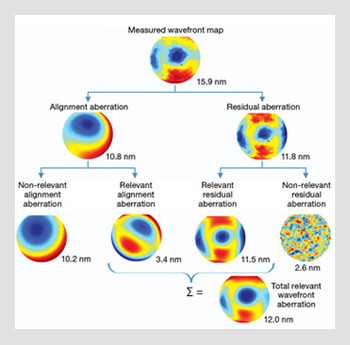Optical Engineering
Filtering Wavefront Maps Improves Uncertainty Estimates
Wavefront maps typically contain both relevant and non-relevant information. Removing the extraneous data helps engineers to estimate uncertainties more accurately.

Wavefront maps that represent the shape of a wavefront propagating through an optical system are a familiar aspect of optical engineering. An interferometer or wavefront sensor measures these maps as a combination of the system’s wavefront deformation and associated measurement errors. For precise measurements, these errors need to be understood, minimized and reported. Two primary error sources are: 1) random error, which is the spread of results for repeat measurements of the same optic-under-test (OUT); and 2) bias error, characteristics of a test that affect all replicate measurements in the same way.
Controlling the test environment reduces random errors, and bias errors can be subtracted from wavefront measurements once they have been analytically or experimentally characterized. However, neither of these techniques eliminates measurement uncertainty. Random fluctuations and uncertainties in bias error characterization continue to influence measurement results.
Optical engineers use uncertainty estimates to track error sources and their magnitudes (see table). If each error contributor is random and independent, the magnitudes are root-sum-squared to determine an overall uncertainty. Methods for determining error magnitudes depend on the contributor type.
Three-dimensional wavefront maps are a somewhat unique measurement result. The maps have a wide range of spatial frequency content—from low-frequency alignment aberration to high-frequency diffraction effects. Only some of this content is relevant to the wavefront of interest. This presents an opportunity to limit which spatial frequencies are included in wavefront maps and uncertainty estimates for a given test.
Log in or become a member to view the full text of this article.
This article may be available for purchase via the search at Optica Publishing Group.
Optica Members get the full text of Optics & Photonics News, plus a variety of other member benefits.
